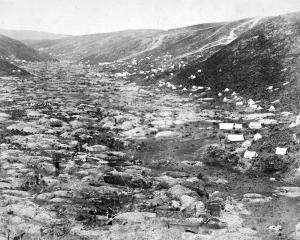
I’m sitting on the western slopes of Orokonui Ecosanctuary, relishing the warmth of a sun-filled afternoon.
There’s a rich chorus of birdsong in the background, yet it’s with hopes of a silent gaze from the black-and-gold eyes of a reptile that I’m poised.
A basking tuatara may look steady as a statue, but one wrong move from me and the young saurian will be down its burrow in a blink — and my hopes for a brief communion today will be over.
The tuatara, New Zealand’s largest and most emblematic land reptile, needs little introduction. Known to scientists as Sphenodon punctatus ("wedge-toothed" and "spotted"), the species is globally famous as the last surviving rhynchocephalian (pronounced rinko-seph-alien, a group distantly — about 250 million years ago — but most closely related to lizards and snakes). Today the tuatara is a taonga or taoka to Maori and a treasure for all New Zealanders.

About a thousand years ago, tuatara lived throughout much of Aotearoa, including Otago. Individuals played ecosystem roles as burrow-creators, low-energy predators (of invertebrates, lizards and small birds) and were food themselves for creatures such as the now-extinct whekau or laughing owl.
But as humans and other foreign mammals arrived and transformed the landscape, mainland populations of tuatara disappeared; by several hundred years ago, breeding populations survived on perhaps just a few dozen offshore islands.
Translocations in the past three decades have helped to re-establish wild populations of tuatara in parts of Cook Strait and further north. But until about 10 years ago, none was in a large, secure site on Te Waipounamu South Island.
It was a momentous day then, on October 16, 2012, when members of Ngati Koata, kaitiaki of the world’s most abundant population of tuatara, travelled south with precious cargo to Orokonui. Inside cardboard postal tubes were 30 wild adult tuatara and 14 half-grown juveniles brought from Takapourewa (Stephens Island), in Cook Strait.
After a warm welcome from mana whenua Kati Huirapa Runaka ki Puketeraki and staff and supporters of Orokonui, a few tubes were opened and several regal, crested heads appeared. All 44 tuatara were later released into prepared burrows. A second release followed within two months, of 43 captive-reared juveniles (some from prior rearing at Orokonui). In 2016-17 another 18 captive-reared juveniles arrived, bringing the total number of tuatara released at Orokonui to 105.
I think it must be quite an event for a tuatara — potentially living for more than 130 years, as recently estimated — to be transported from what has been a familiar, small home range for decades, then released into a new habitat with few other tuatara and differences in vegetation and food supply.
Early indications from translocations in northern Aotearoa are that tuatara are resilient to such shifts where habitats are essentially free of pest mammals. However, Orokonui offered the additional challenge of a cooler climate. It has been just over 10 years since the original release, with ongoing monitoring involving staff and students from the University of Otago. What have we learned so far?
The fence, the fence, the fence. Our trail cameras, placed to record the behaviour of tuatara, emphasise the importance of this barrier. Cats and rats — known to have been devastating to tuatara elsewhere — continue to roam the boundary. An intact fence is crucial to prevent re-entry of these and other predatory mammals, including stoats.
Adult tuatara inside have survived well and are in good physical condition. For example, by five years after release, more than 60% were known from night and day searches to be still alive. This result compares favourably with translocations elsewhere.
The released juveniles have survived well and are growing. Encouragingly, Scott Jarvie’s PhD studies show this includes juveniles initially reared in captivity as well as wild-reared individuals. Furthermore, many tuatara released at Orokonui as juveniles are now adult-sized and potentially breeding.

Research that models climatic suitability led by Scott Jarvie and others suggests Orokonui and some other sites in southern Te Waipounamu — now relatively cool — will become increasingly valuable for tuatara in coming decades. In contrast, some sites in northern Aotearoa may become less suitable as the planet’s familiar climate unravels (and sea levels rise).

Alison Cree is an emeritus professor of zoology at the University of Otago.












